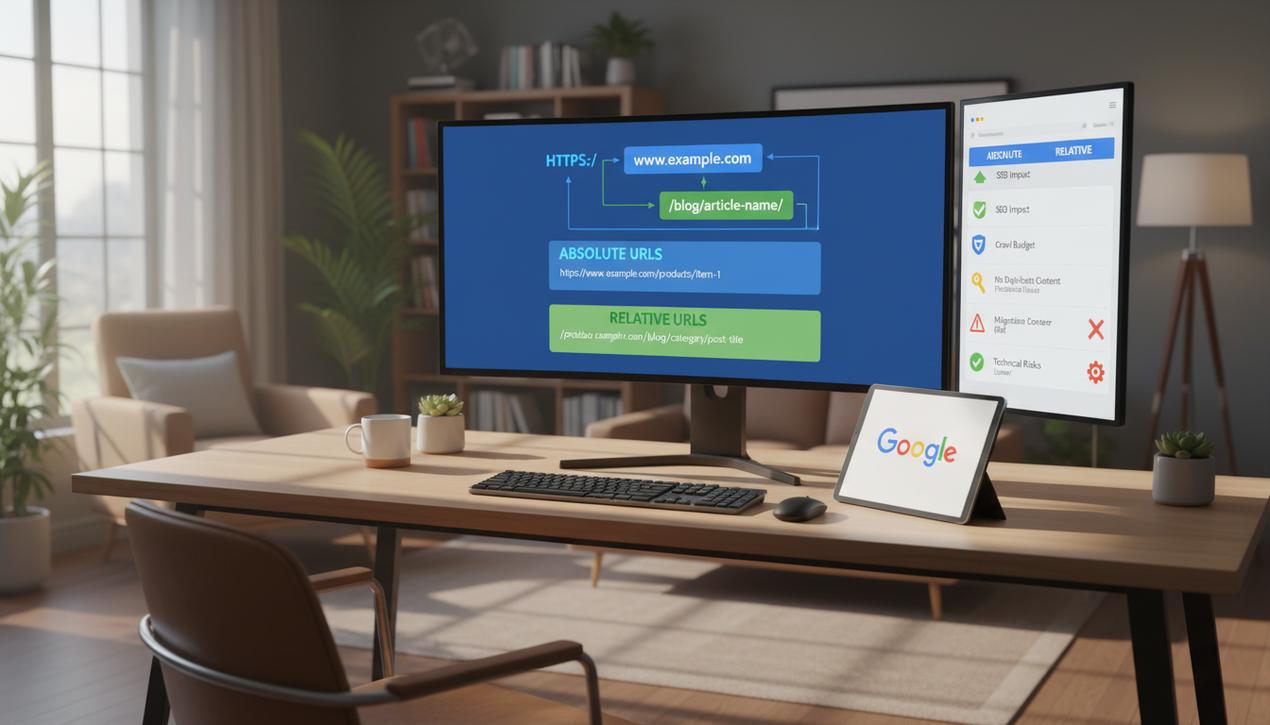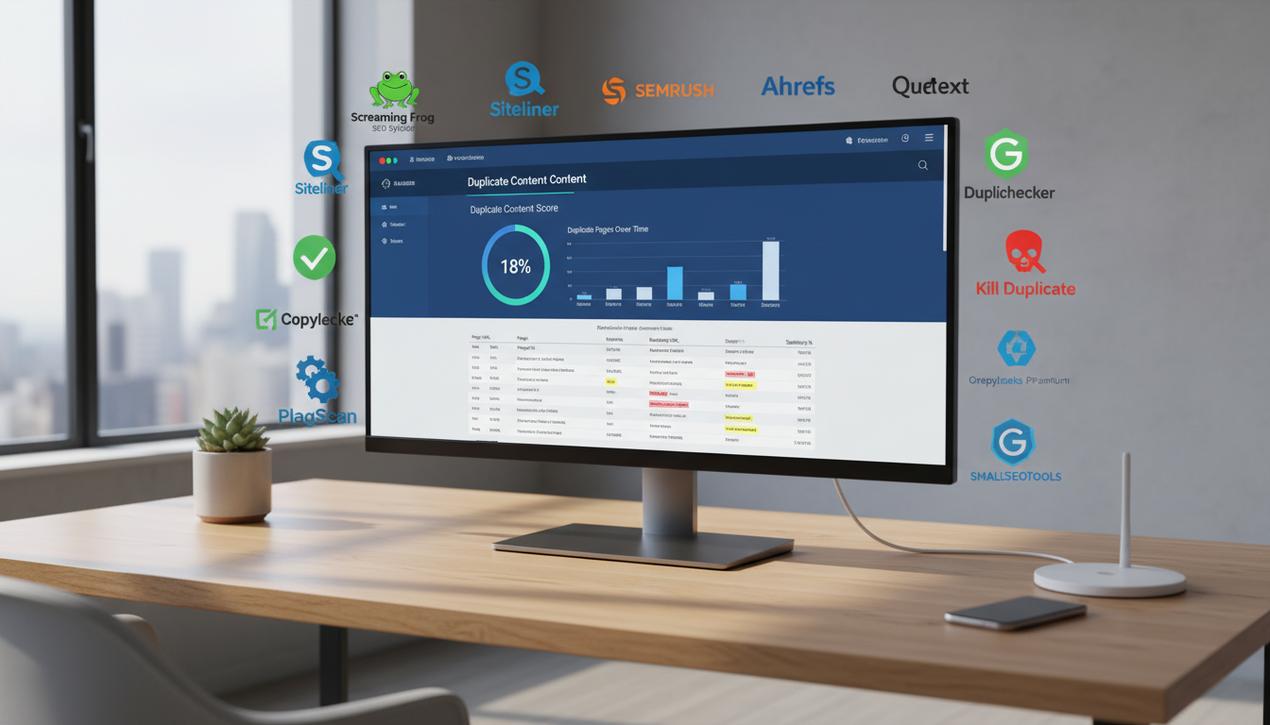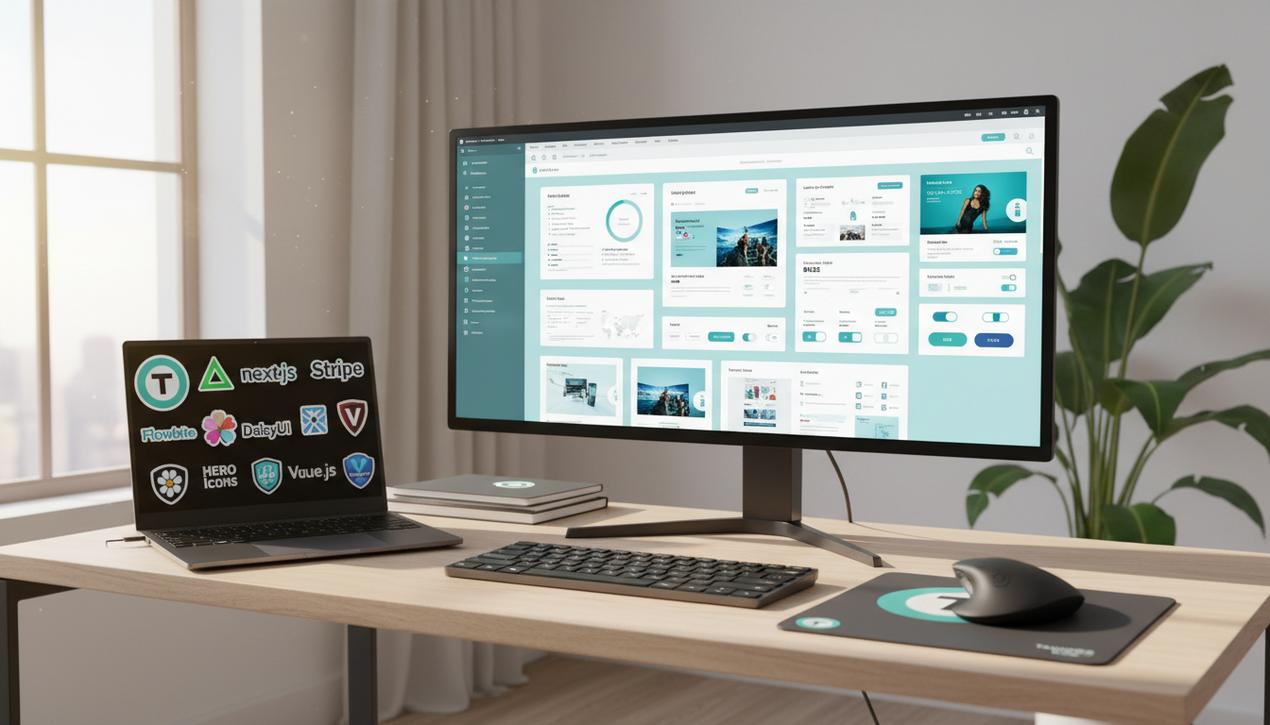Absolute vs. Relative URLs: The 2025 SEO Guide


In the complex architecture of a website, URL structure is an often-overlooked foundation. Yet, the choice between an absolute and a relative URL is not a mere technical detail; it’s a strategic decision with profound impacts on maintenance, user experience, and most importantly, search engine optimization (SEO). Poor link management can lead to duplicate content issues, waste search engine crawl budget, and significantly complicate site migrations. Technical SEO audits in 2025 consistently show that over 50% of websites have linking issues that can harm their SEO performance. Understanding the fundamental difference between these two path types and knowing when to use each is therefore an essential skill for any developer, webmaster, or digital marketer. This comprehensive guide goes beyond simple definitions to provide you with an in-depth analysis, concrete use cases, and the 2025 SEO best practices to master your link structures.
The Fundamentals: Anatomy of a URL
Before comparing the two approaches, it’s crucial to break down a URL to understand each part of its anatomy and the role it plays.
What Is an Absolute URL?
An absolute URL is the complete, unambiguous web address of a resource on the internet. It contains all the information a browser needs to locate a page or file, regardless of where the link is clicked from. You can think of it like a full postal address, including the country, city, street, and house number.
Its structure always includes:
- The protocol: Most commonly `http://` or, preferably, `https://`.
- The domain name: For example, `www.yourwebsite.com`.
- The file path: The folder and page name, such as `/blog/my-first-post/`.
Example of an absolute link in code:
<a href="https://www.yourwebsite.com/blog/my-first-post/">Link to my first post</a>
This type of link is self-contained. You can copy and paste it into any browser, and it will always lead to the correct destination.
What Is a Relative URL?
A relative URL, in contrast, only specifies a portion of the path. It is “relative” to the page it’s located on. The browser must infer the full address based on the current page’s URL. This is like giving directions from within the same building: “the third door on the left down this hall.”
There are several types of relative paths:
- Page-relative: Links to a file within the same directory.
- Parent-relative: Moves up one level in the directory structure.
- Root-relative: Starts with a `/`, telling the browser to begin from the root of the domain name.
<a href="page2.html">Go to Page 2</a>
<a href="../page1.html">Go back to Page 1</a> (The `../` tells the browser to “go up one folder”).
<a href="/folder/page2.html">Go to Page 2</a> (This is often the best compromise if you must use relative links).
Absolute vs. Relative URLs: A Head-to-Head Comparison
To quickly visualize the differences, advantages, and disadvantages of each approach, here is a summary table.
- Syntax:
Absolute: Complete (`https://domain.com/page`)
Relative: Partial (`/page` or `page.html`) - Primary Use Case:
Absolute: External and internal links (recommended for SEO)
Relative: Internal linking on development servers - SEO Impact:
Absolute: Very positive. Avoids ambiguity for crawlers, prevents duplicate content.
Relative: Risky. Can generate duplicate content and waste crawl budget. - Maintenance & Migration:
Absolute: Safer. A “find and replace” in the database is reliable during a migration.
Relative: Deceptively complex. Seems simple but can break links if the folder structure changes. - Major Risks:
Absolute: Copy-paste errors when moving from a staging to a production environment.
Relative: Accidental creation of duplicate pages, scraped content that keeps your internal links.
The Critical Impact on Search Engine Optimization (SEO)
The debate between absolute and relative URLs has long been settled by SEO experts. For search engines like Google, clarity is king. An absolute URL is a clear, unambiguous signal, whereas a relative URL can create confusion.
Google’s Perspective: Clarity and Crawl Budget
Google’s crawlers (Googlebot) navigate the web by following links. Every website is allocated a “crawl budget,” which is the number of pages Google can and will crawl. Relative URLs can lead crawlers down incorrect paths or to multiple versions of the same page (e.g., `http://`, `https://`, `www` vs. non-`www` versions). This wastes the crawl budget on redundant pages instead of focusing it on your important content. An absolute URL ensures every link points to a single, canonical version of a page, thereby optimizing the crawl.
The Duplicate Content Trap
Duplicate content is one of the most damaging technical SEO issues. It is the primary risk associated with using relative URLs for internal linking. Imagine your site is accessible via both `https://yourwebsite.com` and `https://www.yourwebsite.com`. If your internal links are relative (e.g., `href=”contact-us/”`), both versions of the site will work, creating two distinct versions of every page in Google’s eyes. By using absolute links (`href=”https://www.yourwebsite.com/contact-us/”`), you force all links to point to the canonical version, consolidating page authority and eliminating duplication.
The Role of the Canonical Tag as a Safety Net
The `rel=”canonical”` tag is a powerful tool to tell search engines which version of a page you prefer to be indexed. If you have an existing site with thousands of relative links, implementing canonical tags on every page is an effective way to mitigate duplicate content problems. However, it should be seen as a safety net, not a foundational solution. The best practice is always to fix the source of the problem by using absolute URLs for internal linking, which resolves the issue at its root rather than just patching it.
Special Cases: RSS Feeds, Sitemaps, and Images
For certain technical elements, the use of absolute URLs is non-negotiable:
- RSS Feeds: Content aggregators read your feed from their own servers. A relative URL would be interpreted relative to their domain, not yours, resulting in broken links.
- XML Sitemaps: The sitemap protocol requires absolute URLs to list all valid pages on your site.
- Images: Using absolute URLs for your images helps Google Images correctly attribute the visuals to your site, which can drive traffic and help protect your content from being stolen.
When to Use Each URL Type: Practical Scenarios
The theory is clear, but how do you apply it in practice? Here are the most common scenarios and the best approach for each.
Scenario 1: Internal Linking on Your Website
Recommendation: Absolute URLs.
This is the most debated point, but the modern SEO consensus is clear. For all links between pages on your live site (navigation menus, in-content links, footers), use absolute URLs. This eliminates any risk of ambiguity for search engines, prevents duplicate content, and makes links easier to track in analytics tools.
Scenario 2: External Outbound Links
Recommendation: Absolute URLs (Mandatory).
This is the one case where there is no choice. To link to another website, you must provide its full address. Remember to add the `target=”_blank”` and `rel=”noopener noreferrer”` attributes to open the link in a new tab for better user experience and security.
Scenario 3: Linking to Resources (CSS, JavaScript, Images)
Recommendation: Root-Relative URLs.
For local files like stylesheets, scripts, or images, using a root-relative URL (one that starts with a `/`) is a common and effective practice. For example, `/css/style.css`. This format is portable between development and production environments while being less prone to errors than simple page-relative paths.
Scenario 4: Site Migrations and Domain Changes
Recommendation: Absolute URLs.
Contrary to a popular misconception, absolute URLs make migrations easier. When changing a domain name, a single “find and replace” command in the database can reliably update thousands of links in an instant. Attempting this with relative links, especially if the site structure also changes, can become a nightmare and a source of countless broken links.
In conclusion, while relative URLs might seem convenient for local development, the scale tips overwhelmingly in favor of absolute URLs in a live production and SEO context. For 2025 and beyond, the established best practice is to use absolute URLs for all of your internal and external linking. This discipline ensures that search engines interpret your site without any ambiguity, protects against duplicate content issues, optimizes your crawl budget, and makes your site more robust and easier to maintain in the long run. Adopting a clear and consistent URL strategy is a minimal investment in effort for a maximum return in performance and peace of mind.




